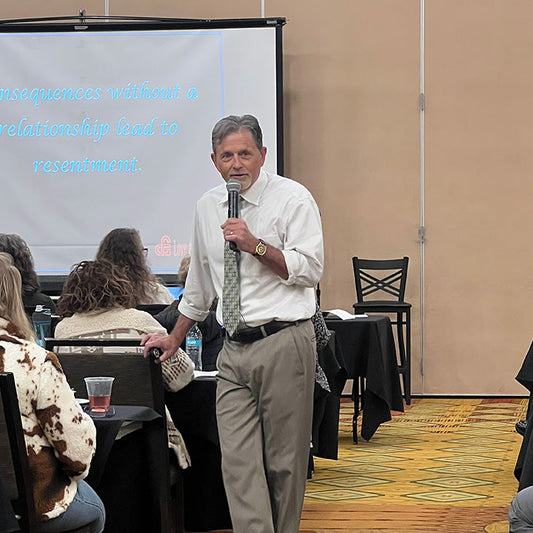This past February we released the third edition of our 9 Essential Skills for the Love and Logic Classroom® curriculum. It has been significantly updated and contains all new videos. The general format of the curriculum remains the same, with nine modules presenting the nine Love and Logic skills that teachers can use for effective classroom management.
Although we updated the content of this curriculum, the essential principles of Love and Logic have not changed. In fact, the principles of Love and Logic have not changed for decades, and they are used throughout this new release as well as in all our parenting curricula. These principles are grounded in two simple, time-tested rules:
The Two Rules of Love and Logic

The First Rule of Love and Logic:
Adults take good care of themselves by setting limits without anger, lectures, threats, or repeated warnings.
The Second Rule of Love and Logic:
When a child causes a problem, the adult hands it back in loving ways.
The approach in the 9 Essential Skills for the Love and Logic Classroom® curriculum is significantly different from that used in the parenting curriculum. Teachers and parents face similar challenges working with the kids in their lives, so they must use different techniques to apply our principles.
Neutralizing Arguing: A Shared Technique
However, there are some techniques that are essentially identical. One of these is our approach to neutralizing arguing with kids. In fact, this is the first module in the curriculum for teachers as well as the curriculum for parents.
The reason for this is simple and based on how our brains are wired. When arguing erupts, our brains tend to go into fight or flight mode very quickly. When this happens, rational thinking stops, and the interaction becomes purely emotional and irrational.
The Two-Step Strategy for Teachers
We have learned that one effective way educators can neutralize arguing is to use two easy steps.
Step One: Do not think.
In other words, avoid getting drawn into the argument so we don’t become frustrated and angry.
Step Two: Calmly repeat a single Love and Logic one-liner.
The best way to neutralize arguing is by not getting mired in complicated debate or discussion, but by using calm and simple responses.
Examples of One-Liners for the Classroom
In our curriculum, we give examples of how to implement this technique as well as a variety of Love and Logic one-liners that are appropriate for the classroom, such as, “I’ll listen when your voice is calm,” or “I argue at 3:15 p.m. daily.”
Why This Strategy Works
Besides avoiding unpleasant arguments, there are other benefits to neutralizing arguing. Using these techniques with kids can show them that arguing does not pay. For example, kids who learn to get their way by arguing often develop significant emotional, social, and behavioral problems. By showing them that arguing doesn’t pay, they can learn healthier, more positive ways of interacting with others.
The module on Neutralizing Arguing in our educator and our parenting curricula are the foundation for the other techniques that follow. Mastering it allows adults to build healthy, positive relationships with the kids in their lives.
You can learn more about this technique as well as other techniques in our book, Teaching with Love and Logic, or by taking the third edition of our 9 Essential Skills for the Love and Logic Classroom® curriculum.
Thanks for reading!



























































